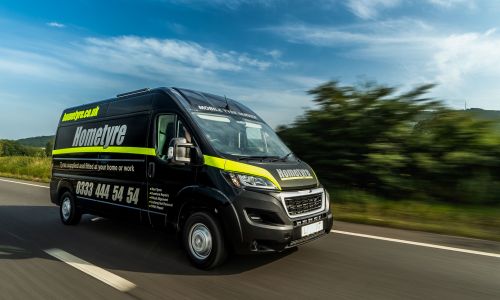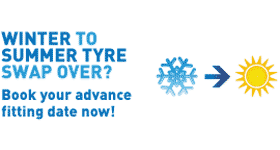EU Tyre Label Meanings - Wet Grip, Fuel Efficiency and Noise
You've seen it before, when purchasing a tyre it has a colourful chart (like below) next to the product showing the ratings of the tyre. But, what are these ratings?
On the left had side, we have the fuel economy. On the right is the braking distance in the wet and at the bottom left we have the external rolling noise.

Fuel Economy/Rolling Resistance
Between the best in class (Rated A) and the worst in class (Rated E), there is a 7.5% difference. This is measured over the lifetime of the tyre. To put that into perspective, an A rated tyre would save you an additional 0.5L of fuel over 100km when compared to the lowest class rating.
However, there are many other factors that affect the fuel economy of the vehicle such as having the correct tyre pressures (check your manual or door sil), the condition of your suspension/alignment, the driving style and even the road surface could change this rating dramatically!
Wet Grip
Unlike the rolling resistance category, the difference between category A and category F is more substantial. A rated tyres offer a 30% shorter stopping distance when compared to the lowest category.
If you live in an area with heavy rain and flooding or generally poor road surface conditions like here in Shropshire, when choosing a tyre, this would be the category to pay attention to!
External Rolling Noise
There are three ratings in this category: 1, 2 or 3 black bars. One black bar is the quietest and means the tyre is at least 3DB below the EU limit. Two black bars means that the tyre meets the EU limit whilst three bars means that it is above the EU limit.
Measuring the noise of the tyre is done from outside of the vehicle whilst travelling down a road at a set speed.

You may have seen silent tyres mentioned in one of our
previous articles, these tyres have a specialist foam inside of the tyre which absorbs
some of the noise. These are often found in electric vehicles.
Why electric
vehicles?... because of the electric motors, very little noise is emitted and then
heard inside of the cabin. For an ICE car (Internal Combustion Engine), the
loudest thing is the engine but, for an electric vehicle some of the loudest noise
produced is emitted from the tyres. By installing a layer of foam inside of the tyre and altering the tread slightly, this can noticeable reduce the noise emited from the tyre. But, noticing this inside the vehicle is more down to the cabin insulation as that's what's absorbing the sound coming into the vehicle.


Below the two ratings - Rolling Resistance and Wet Weather Performance, there could be two additional symbols. These symbols are representing the winter capabilities of the tyre. If they have a mountain with three peaks and a snowflake (left above image), this is the Three-Peak rating proving that the tyre has gone through rigorous winter testing.

Some European countries require these tyres to be installed during set winter months or even on specific roads. You can find out more about that here.
For a very small number of tyres, and for those who like to get nerdy about tyres, there might be another symbol next to the three peak. A snow topped mountain. If approved (top right image), this symbol will always appear next to the three-peak symbol, they will never be apart.
This symbol is classed as "Nordic Winter Tyre Approved" and is approved for the use in extremely cold conditions and areas such as the artic circle. Generally, these tyres do not work well in wet or less severe winter conditions due to the design of the tread and increased silicone content.
An increased silica content ensures that the tyre stays supple at a temperature range from 6°C to minus 20°C improving grip. This also means that at temperatures above 6°C, the tyre will wear much quicker as it effectively tears itself apart as it's 'too sticky'! Great for motorsports but not great for trying to grip in snow and ice.
Pattern wise, these types of tyres have a higher number of sipes (the valleys on the edge of the tyre) when compared to all-season or even winter tyres. The sipes provide a pivotal role in collecting snow and compacting them into these grooves as snow grips to snow.
If you're in need of new winter tyres, new all-season tyres or just need some advice on what to purchase, give us call on 0333 444 5454, send us an email to info@hometyre.co.uk or if you'd like to book an appointment online, you can book online here!








HometyreGroup
Join the conversation
on Twitter
Follow us